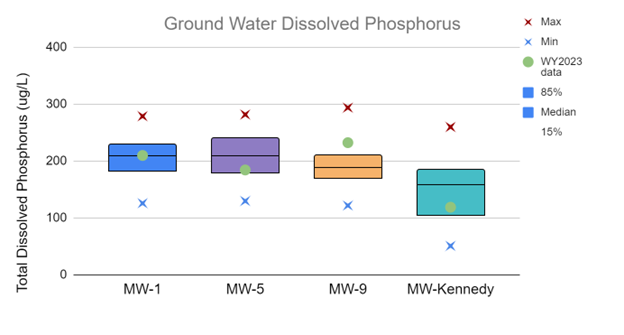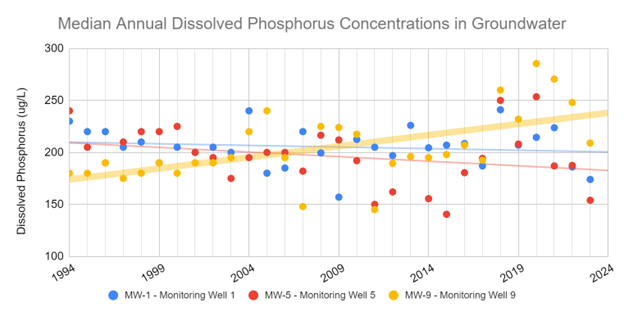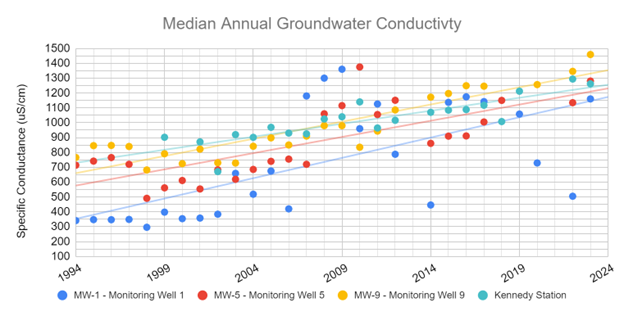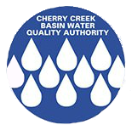Alluvial Water Quality
Highlights:
Alluvial (groundwater) contributes approximately 14% of the total annual yearly inflow to the Reservoir. Phosphorus concentrations in groundwater are similar to concentrations in Cherry Creek and higher than the average of all surface water inflows concentrations.
Concentrations of total dissolved phosphorus (TDP) or soluble reactive phosphorus (SRP) are used for long-term evaluation of phosphorus because dissolved fractions are the main chemical forms found groundwater and a longer period of record is available. In WY 2023, the median TDP concentrations of the alluvial groundwater were below the baseline medians further up in the watershed (MW-1 and MW-5) but were much higher than the baseline just upstream of the Reservoir at MW-9. 
A Mann Kendall trend analysis identified a statistically significant increasing trend of the annual median dissolved phosphorus in the groundwater upstream of the Reservoir (MW-9). 
A Mann Kendall trend analysis identified a statistically significant increasing trend of the annual median conductivity of all monitoring wells upstream of the Reservoir as well as MW-Kennedy below the Reservoir is significant.

Why does Alluvial Water Quality Matter?
Groundwater travels more slowly than surface water to the Reservoir. CCBWQA samples groundwater to characterize the contribution and timing of past and current pollutant loads that originate underground.

Nutrient Concentrations: Alluvial and Surface Water Comparisons
info_outlineEach point on this graph represents a sampling event. The different point colors represent different locations. To learn more about a specific data point, hover over it with your mouse.
Hey! This page is interactive.
- Change the start and end dates to look at different time periods
- Investigate different parameters using the parameter dropdown list
- Select the surface water and groundwater location you would like to compare
- To learn more about a specific data point, hover over it with your mouse
